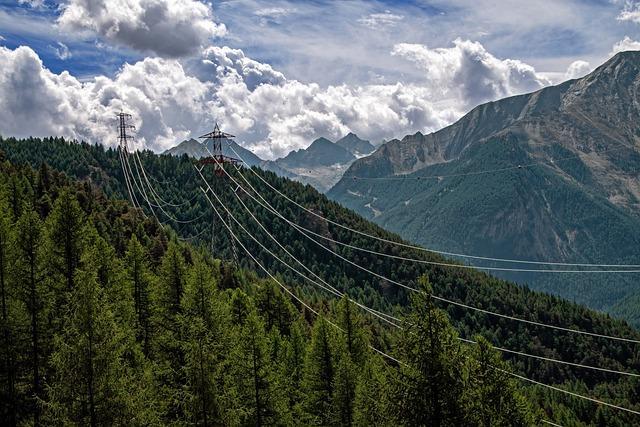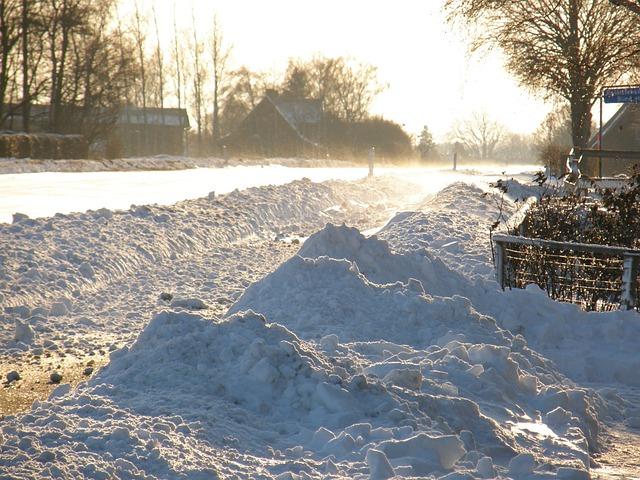Introduction:
Trees play a crucial role in shaping weather patterns and contributing to the overall climate of our planet. As they draw water from the soil and release it into the atmosphere, they impact the balance of water and heat at the Earth’s surface, influencing temperature, humidity, and precipitation levels. Additionally, tree species’ growth can be affected by climate change, revealing the gradual shifts in climatic variables over time. Understanding the relationship between trees and weather patterns can provide valuable insights into how natural ecosystems respond to fluctuations in the environment. This article will delve into the intricate connection between trees and weather patterns, exploring the ways in which trees influence and are influenced by the weather around them< a href="(https://attheu.utah.edu/facultystaff/how-trees-affect-the-weather/)">[1][2].
The Impact of Trees on Local Climate
Trees play a crucial role in influencing local weather patterns through various mechanisms. One significant impact is their ability to regulate temperature in their surroundings. This is achieved through the process of evapotranspiration, where trees release water vapor into the air, cooling the environment [1]. Additionally, the shade provided by trees can reduce the heat absorbed by urban areas, helping to mitigate the heat island effect and lower temperatures in cities.
Another essential contribution of trees to local climate is their influence on precipitation patterns. Trees can act as ‘biological pumps,’ promoting the movement of moisture in the atmosphere and contributing to the formation of clouds and precipitation [2]. By intercepting and absorbing rainfall, trees also help in reducing surface runoff and soil erosion, contributing to overall water management in an area.
Furthermore, planting trees strategically can enhance the resilience of a region to extreme weather events. By creating windbreaks and shelterbelts, trees can protect against strong winds, storms, and erosion, thus improving the weather resilience of communities [3]. This highlights the vital role of trees in not only shaping local weather patterns but also in enhancing the overall environmental sustainability and well-being of an area.
Q&A
Q: Can trees predict the weather?
A: There is no conclusive evidence that trees can predict the weather like a meteorologist would. While some pine trees have been observed to close their cones in response to humid weather, indicating a change in the environment, this behavior does not directly correlate to predicting specific weather patterns1.
Q: How do trees benefit nature, people, and climate?
A: Trees play a crucial role in environmental conservation by absorbing and storing carbon dioxide from the atmosphere, contributing significantly to climate mitigation efforts. Additionally, trees provide various ecosystem services that benefit both nature and people, such as improving air quality, regulating temperatures, and supporting biodiversity2.
Q: How do trees tell time?
A: Similar to humans, trees have a circadian clock that regulates their biological processes and gives them an intuitive understanding of the time of day. This internal clock helps trees synchronize their growth and physiological functions with the diurnal cycle, allowing them to adapt to changing environmental conditions effectively3.
Conclusion
trees play a crucial role in shaping weather patterns through their intricate interactions with the environment. They not only impact the balance of water and heat on our planet’s surface but also contribute to the acclimation of forests to changing environmental conditions over the long term. As climate change continues to affect tree regeneration and alter the frequency and intensity of forest disturbances, understanding the influence of trees on weather patterns becomes increasingly important. By recognizing the intricate relationship between trees and weather, we can better appreciate the vital role that trees play in our ecosystem’s overall health and stability. For more in-depth insights into this topic, refer to the following sources: [1], [2], [3].
Simpsons Tree Services, Servicing Melbourne’s North Eastern Suburbs
Book a quote online at www.simpsonstrees.com.au




